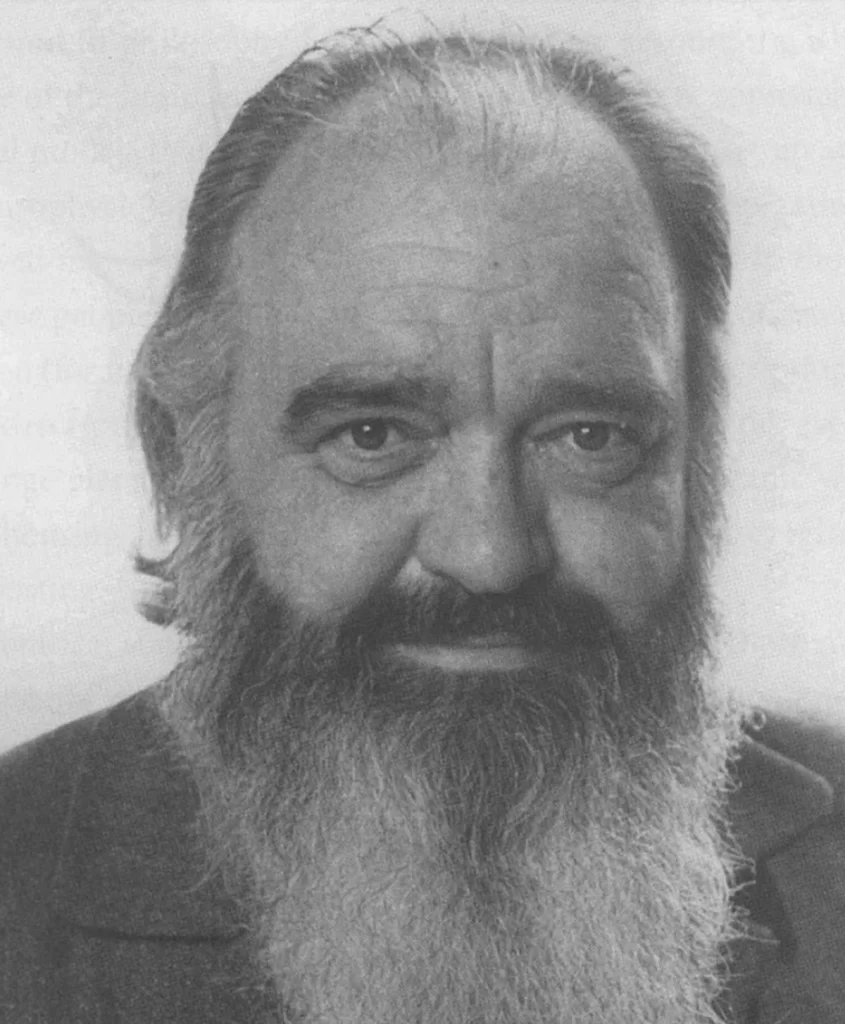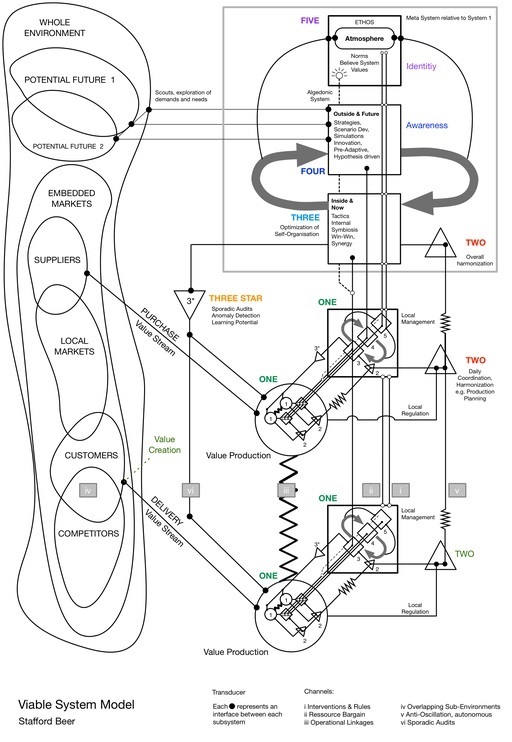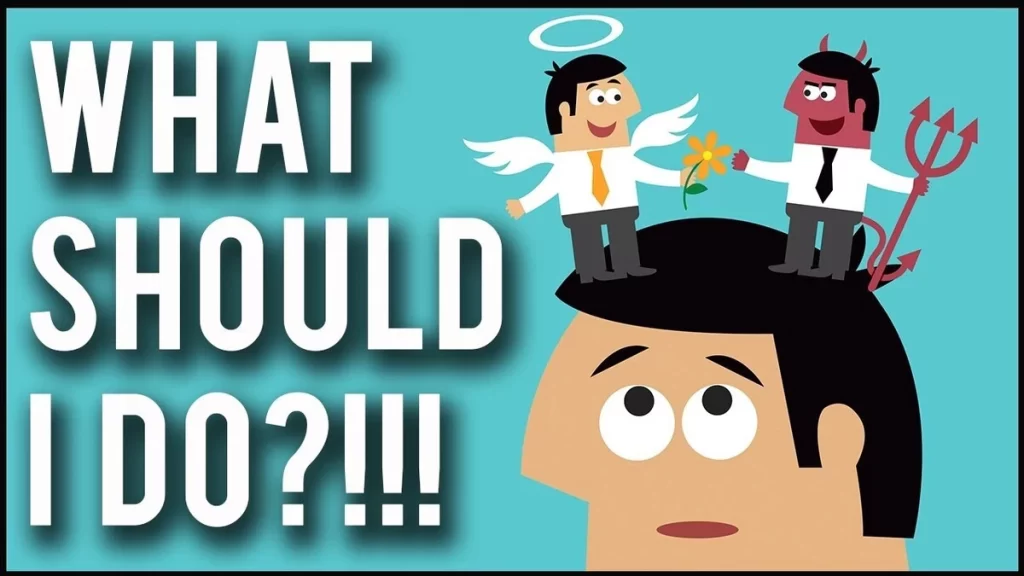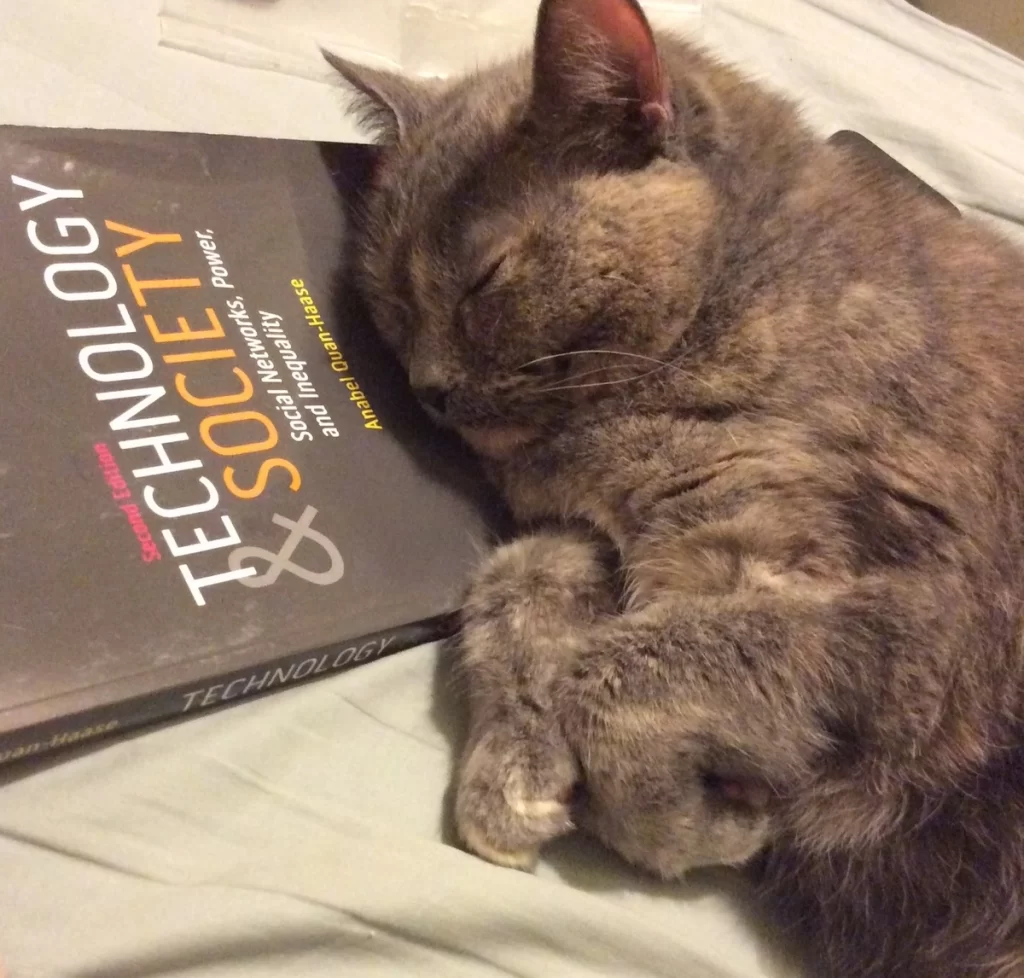Stafford Beer developed the Viable System Model (VSM) during the 1960s. Stafford Beer introduced the Viable System Model (VSM) to the world in his landmark book Brain of the Firm (1972). The Viable System Model (VSM) is the most pronounced articulation of his management cybernetics theory.
In remembrance of my exploited intellectual work by Professor Rocci Luppicini at uOttawa (see Facts below) and in tribute to the great Stafford Beer.
- The science of effective organization
- The Viable System Model
- Application of Stafford Beer’s Viable System Model
- An exemplary model of a corporation as a viable system
- Some of Stafford Beer’s key works
- Appendices for Stafford Beer’s Viable System Model
You may also be interested in Karl Weick – sensemaking through organizing.

The science of effective organization
The Viable System Model is a powerful and versatile systems governance framework with applications in pedagogy, business management, and systems engineering in the design/audit of viable systems. A viable system, a biological metaphor, is an autonomous system that is capable of independent existence.
Brain of the Firm (1972/1981), The Heart of Enterprise (1979), and Diagnosing the System (1985) together establish the theoretical foundations of Stafford Beer’s Viable System Model and its applications in management cybernetics.
Norbert Wiener brought the term cybernetics to the intellectual world in his 1948 book “Cybernetics: Or Control and Communication in the Animal and the Machine.” Stafford Beer‘s (1979, 1981 and 1985) management cybernetics develops the cybernetics principles associated with “Control and Communication” and applies them to theorize the governance of effective organizations.
Technology-based automation includes robotic process automation, cognitive automation, and social robotics. It relies on efficient and fast processing of large amount of information based on logic circuits and programmed recommender algorithms. In comparison, Stafford Beer’s management-based automation is based on “the science of effective organization.”
The Viable System Model prescribes optimal human organization (structure and function).
Stafford Beer argued that viable or autonomous systems have an underlying optimal organization (a specific structure with five specialized functions within it that ensure its survival in a changing environment through the regulatory process of homeostasis). The central principle of recursion says that every viable system contains and is contained in a viable system (viable systems in recursion are homologous).
The Viable System Model
The cybernetic model of any viable system is comprised of five necessary and sufficient subsystems interactively involved in any organism or organization capable of maintaining its identity in a changing environment: Operations, Coordination, Optimization, Development, and Valuation—the “management cybernetics” of the system.
System 1 (Operations) refers to the fundamental operations within a viable system. The first subsystem of any viable system “consists of those elements that produce it (they are the system’s autopoietic generators)” (Beer, 1984, p. 14). It includes the managements of these operations, but it does not include senior management, which should be considered as a set of services to System 1. There is “a lot more variety in the environment than the operation needs to know about and a lot more variety in operations than management needs to address” (Leonard, 1999, para. 29). System 1 elements may “get in each other’s way” which can cause oscillations in the system. Therefore, coordination between them is essential so as to dampen the oscillations.
System 2 (Coordination) functions are coordination and attenuation of oscillations between System 1 elements–regulation of variety. System 2 consists of an overseeing regulatory centre at senior management level, and a regulatory centre for each element of System 1. Examples of System 2 are a production plan, or an internal company newsletter. System 2 activity can take place informally, over lunch or in the pub after work. Senior management only need to intervene to settle disagreements between the elements.
System 3 (Optimization or Control) refers to everyday control of System 1 by senior management. It has two key functions–management of internal and immediate control of activities of System 1, and supervision of coordination activities of System 2. System 3 exerts control mainly using the vertical command channels on the VSM diagram. However, to effectively maintain System 3’s requisite variety, System 3* (Three-Star) may need to directly monitor (audit) the operations of System 1, to ensure that System 1 management is not, either by accident or by design, “pulling the wool over their eyes.”
System 4 (Development) fulfills an intelligence function—it looks outside, and to the future to help clarify the total environment in which the organization is embedded. The central question for all participants is: Do I do what I always do for this transaction or do I innovate?
System 5 (Valuation or Policy) effectively defines the identity and ethos of the organization–its characteristics and purpose–by monitoring the activities of System 3 and System 4’s homeostat. The combined structure of Systems 3, 4 and 5 (the observer of the system) comprise the metasystem that is logically “over and above” the combined structure of Systems 1, 2 and 3. It is more concerned with the management of the production system as a whole.
Stafford Beer (1972/1981, 1979, 1985) builds on the second order cybernetics of Heinz Von Foerster (1981) and William Ross Ashby’s (1964) Law of Requisite Variety to conceptualize the VSM.
Variety is a measure of systemic complexity. It is the number of possible states or distinguishable elements of a system (Beer, 1985).
The management of any viable system “poses the problem of managing complexity itself, since it is complexity (however generated) that threatens the system’s regulators.” The degree of control of a system is proportional to the amount of information available. “If there is enough regulatory capability in a control function to manage a situation we say that it has ‘requisite variety.’” If not, “the situation will be out of control” and the system viability is threatened (Leonard, 1999, para. 20). Optimal information variety management should be maintained between Systems 1 and 2, and between Systems 2 and 3, and between Systems 3 and 4, and between Systems 4 and 5, as well as between Systems 1 and 3* and Systems 1 and 5 (algedonic loop).
Challenges applying the VSM include: 1) Linguistic challenges in terminology and use of figurative language (Jones & Cockton, 2003); and 2) methodological challenges—there is no clear methodology applying the framework, and a “lack of methodological literature to assist in the use of the VSM means that its application is not immediately accessible to non-initiated practitioners, conferring another layer of complexity to the framework” (Hilder, 1995).
Application of Stafford Beer’s Viable System Model
Stafford Beer’s Viable System Model can be applied in many ways, to all kinds of organizations.
First, Stafford Beer’s VSM can be applied in the diagnosis (auditing) of organizational management cybernetics—in viability analysis focusing on organizational structure and function (within recursive systems)—as they relate to the 5 cybernetic subsystems. Structural analysis will advise on improving information security within an organization through improved information and knowledge management practices (control of information flow through a system). Functional analysis will advise on improving functional viability.
Second, Stafford Beer’s VSM can be applied to model a new business unit using the yo-yo technique. Typifying systemic behavioral modes across recursive units within the recursive containment hierarchy can be mapped onto a new business unit. The VSM can be applied by senior management in strategic business development and management to model new business units or to design autonomous organizations from scratch.
An exemplary model of a corporation as a viable system
Stafford Beer’s VSM with two operational systems: There is one System 1 purchasing external resources and one System 1 which produces the value, delivered to the customers.

Some of Stafford Beer’s key works
Beer, S. (1966). Decision and control: the meaning of operational research and management cybernetics. Wiley, London.
Beer, S. (1968). Management Science: The business use of operations research, Aldus Books, London, Doubleday, New York.
Beer, S. (1972/1981). Brain of the firm. New York: Herder and Herder.
Beer, S. (1979). The Heart of Enterprise, John Wiley, London and New York. Reprinted with corrections 1988.
Beer, S. (1980). Organizational change and development: A systems view: Glenview: Scott-Foresman.
Beer, S. (1984). The viable system model: Its provenance, development, methodology and pathology. Journal of the Operational Research Society, 35(1), 7-25.
Beer, S. (1985). Diagnosing the System for Organizations; John Wiley, London and New York.
Beer, S. (1993). Designing freedom. House of Anansi.
Appendices for Stafford Beer’s Viable System Model
- Table: Stafford Beer’s cybernetic model (Beer, 1979, 1981, 1985)
- Table: Application of the yo-yo technique to a case study (example)
- The VSM Diagram (Espejo & Gill, 1997)
- Table: Interview instruments for key stakeholder groups (example)
Facts
I introduced my former PhD thesis supervisor at the University of Ottawa Professor Rocci Luppicini to Stafford Beer’s VSM in my PhD thesis proposal of April 15, 2017 (draft 1).
Then there were successive improved drafts that I submitted to Professor Rocci Luppicini, e.g., my PhD thesis proposal of August 30, 2017, and my revised PhD thesis proposal of June 10, 2018. See also my data collection Interview Questions and my Recruitment Invitation for a PhD Thesis Study, both of which were submitted to the University of Ottawa’s Research Ethics Board (REB) on July 31, 2018/August 1, 2018 (the University’s REB submission system was down on July 31, 2018).
Eventually, in December, 2018, I replaced Stafford Beer’s VSM with Karl Weick’s sensemaking model as the latter would become more suitable for how my PhD thesis project developed.
Professor Rocci Luppicini has no public record of authorship/peer-reviewed or academic publications on or utilizing Stafford Beer’s VSM in research prior to being introduced to Stafford Beer’s VSM through my noted work with him.
Fast forward: here’s an example of an application of Stafford Beer’s VSM in pedagogy, a 2020 paper by my former colleagues at the University of Ottawa Dr. Rocci Luppicini and Dr. Eman Walabe: Exploring E-Learning Delivery in Saudi Arabian Universities – published in International Journal of E-Learning & Distance Education/Revue internationale du e-learning et la formation à distance.
Well done, Dr. Eman Walabe – I wish you all the best.
I am happy to see my work on Stafford Beer’s VSM benefiting others.
Before we part ways, you’re invited to read my letter to uOttawa President Jacques Frémont about how to easily implement policy reforms to prevent supervisor bullying of uOttawa students: uOttawa President Jacques Frémont ignores university bullying problem. You may also be interested in How to end supervisor bullying at uOttawa.
Related content
Technoethics PhD Thesis Proposal of April 15, 2017 (draft 1)
DTI uOttawa PhD Thesis Proposal of August 30, 2017
Technoethics uOttawa PhD thesis proposal of June 10, 2018
Recruitment Invitation for a PhD Thesis Study uOttawa Aug. 1, 2018
Back to MA/PhD Thesis Writing Resources (templates)
Back to DTI Courses
Other content
1st Annual University of Ottawa Supervisor Bullying ESG Business Risk Assessment Briefing
Disgraced uOttawa President Jacques Frémont ignores bullying problem
How to end supervisor bullying at uOttawa
PhD in DTI uOttawa program review
Rocci Luppicini – Supervisor bullying at uOttawa case updates
The case for policy reform: Tyranny
The trouble with uOttawa Prof. A. Vellino
The ugly truth about uOttawa Prof. Liam Peyton
uOttawa engineering supervisor bullying scandal
uOttawa President Jacques Frémont ignores university bullying problem
uOttawa Prof. Liam Peyton denies academic support to postdoc
Updated uOttawa policies and regulations: A power grab
What you must know about uOttawa Prof. Rocci Luppicini
Why a PhD from uOttawa may not be worth the paper it’s printed on
Why uOttawa Prof. Andre Vellino refused academic support to postdoc



